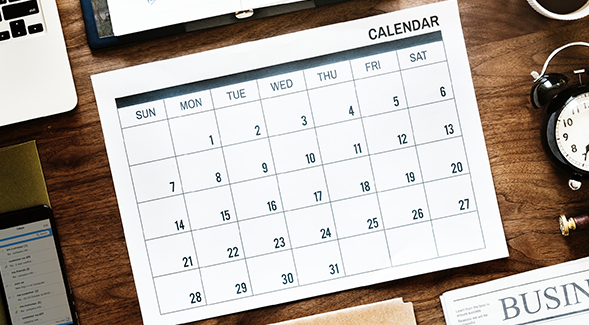Three Questions on the Psychology of New Year's Resolutions
SDSU professor Jim Lange discusses the psychology behind New Year's resolutions.

The SDSU News Team recently sat down with San Diego State Psychology professor Jim Lange to discuss the psychology behind waiting until the end of the year to set any given goal into motion and to seek advice on how to make your resolution a reality.
Q: What is it about a new calendar year that makes people want to make a resolution? Why wait for the new year?
A: We tend to make commitments to change after spending time assessing ourselves. The end of the year naturally prompts that sort of reflection. Added to that, we’ve collectively put the idea of resolutions into the tradition of New Year’s, so socially—for better or worse—there’s some pressure to create them.
Q: Why do you think most people fail to keep their resolutions a few months into the new year?
A: Deciding to make a change, and setting up for successful change, are two different things. Many times, the changes within the resolution are big modifications of habits or lifestyles. For instance, big changes in diet or exercise. But a lot of small changes may be required to reach the goal, and some of those may not be easy to maintain. Once that reality hits, people may indeed feel like they “failed” and discard the resolution altogether.
Q: What advice do you have for people to improve the chances they will achieve the goals of their resolutions?
A: What I like to do is phrase changes as “improvements”, rather than a resolution. For instance, something like, “I’d like to improve my diet.” I then look at specific aspects that can be improved upon. And this is highly personal and requires some reflection. Maybe someone looks at their typical day and sees vegetables at no more than one meal a day. So for them, eating vegetables at least twice a day would be an improvement. Once an area of improvement has been set, you add it to a habit chart so it can track it every day. The key here is there is no “failure” for a commitment like this. At the end of the day, you look at the habit chart and see if you can check that box. Within a few days or weeks, you’ll almost certainly begin to see more regular checks for that item on the chart.
It’s the trend towards regularity of the behavior, not an absolute goal you’re after. And as one item becomes a regular habit it can be removed from the list in favor of another improvement. Building a chart like this is dynamic, so a new year isn’t the only prompt to make a change. It just becomes part of a process of continuous improvements placed on your list.
It’s surprising the sorts of things that can be put on the improvement/habit chart: from adhering to a reasonable bedtime to reading novels 30 or more minutes a day, to meditation, to flossing, to putting $5 into a piggy bank.
Making the list of everyday improvements diverse probably means on any given day, you can accomplish something and increasingly many things that will help you feel happier, healthier and closer to your goals.



